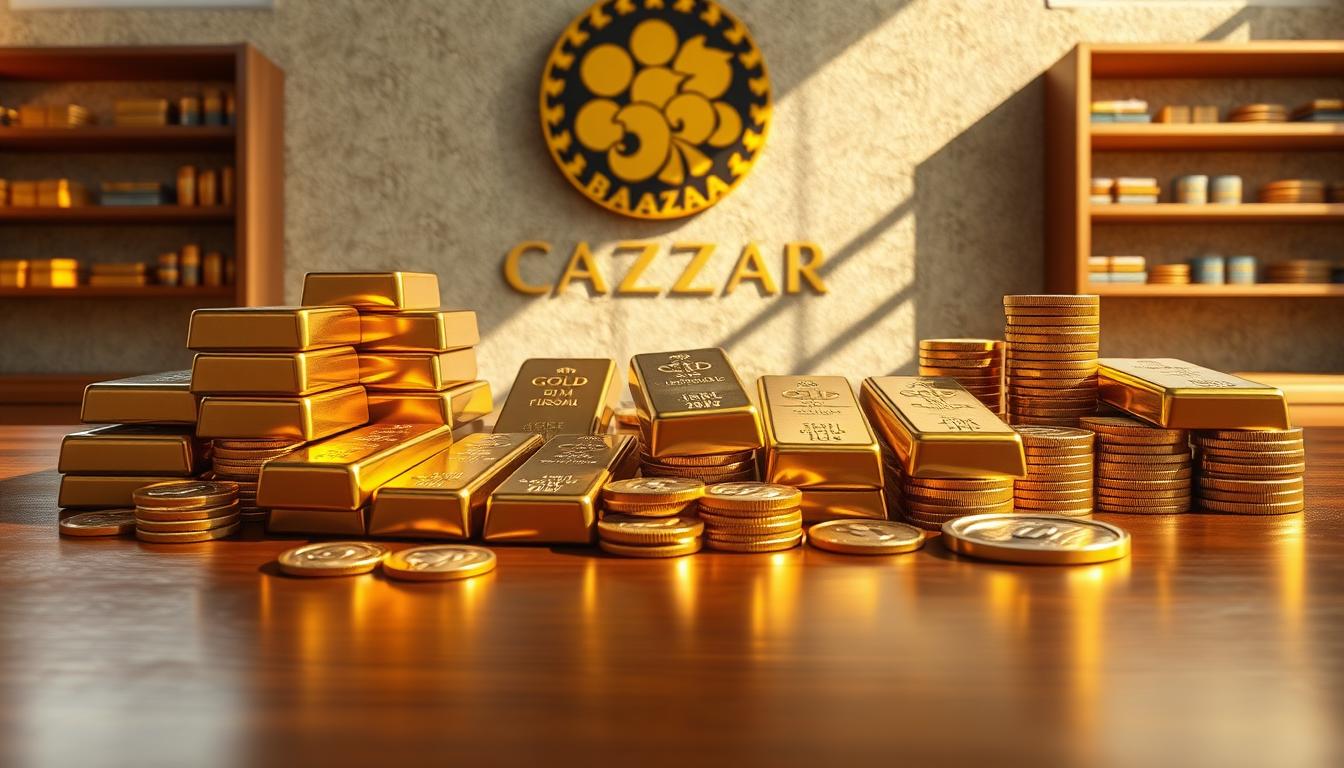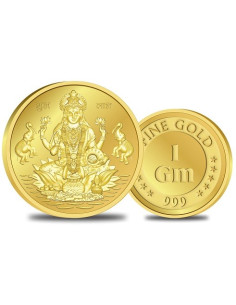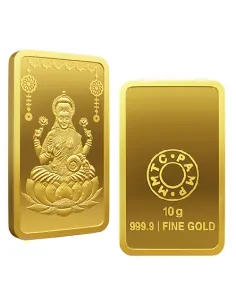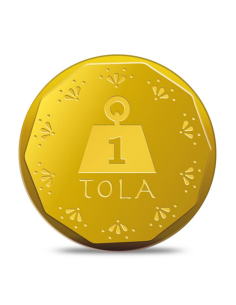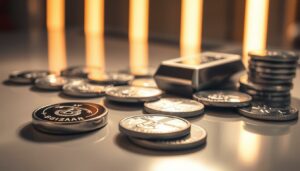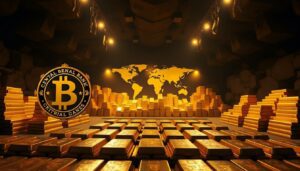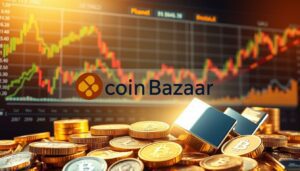Exclusive Deals & Trending Items


Muthoot Pappachan Swarnavarsham Gold Hallmarked Ganesha Coin of 5 gms in 22 KT 916 Purity Fineness
Shop NowThe recent fight between Israel and Iran has shaken the global market. It has caused fluctuations in gold and silver prices. Gold prices have hit a record high of $2737, showing how Middle East conflicts affect precious metal market trends.
For years, Middle East conflicts have deeply influenced the global economy. They have changed the prices of gold and silver. Looking at the timeline of these conflicts helps us understand how they’ve shaped the precious metals market.
Key Takeaways
- The recent Israel-Iran conflict has led to a surge in gold prices.
- Historical Middle East conflicts have significantly impacted gold & silver rates.
- Understanding the timeline of these conflicts is crucial for analyzing precious metal market trends.
- Global economic shifts during conflicts affect gold and silver prices.
- The relationship between Middle East tensions and precious metal prices is complex and multifaceted.
The Relationship Between Geopolitical Tensions and Precious Metals
The link between global tensions and precious metal prices is key for investors. When tensions rise, people often look to safe assets.
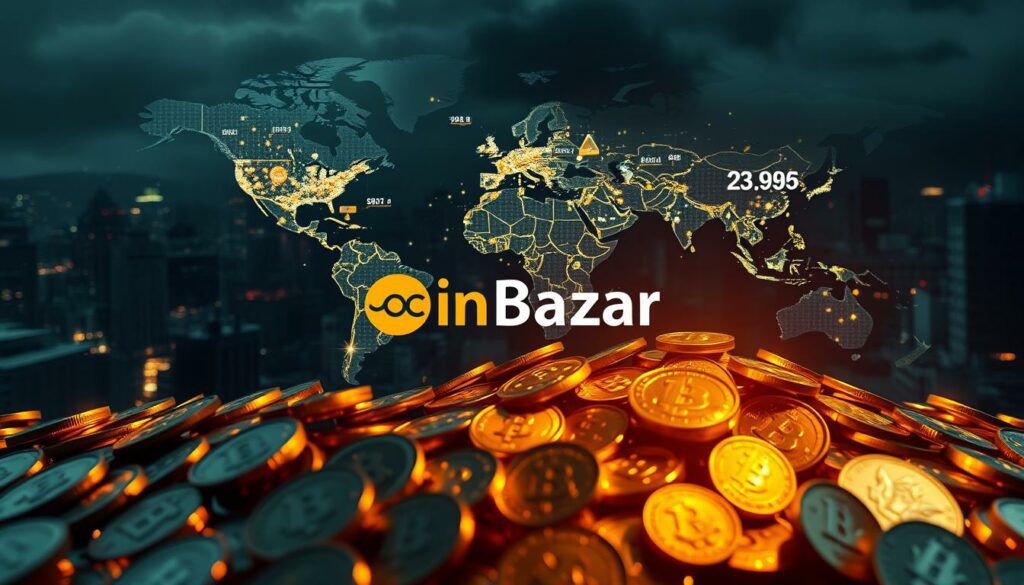

Safe Haven Assets During Global Uncertainty
Gold and silver become safe-haven assets in uncertain times. Investors use them to safeguard their wealth from market ups and downs. These metals have kept their value when others have not.
Why Investors Turn to Gold & Silver During Conflicts
Investor psychology boosts demand for precious metals in conflicts. The belief in gold and silver as valuable assets pushes their prices up. This is seen in live silver prices and the trend in precious metals rates.
Recently, gold prices dipped a bit due to less Middle East tension. Yet, they are still 30% higher this year, close to all-time highs.
Current Gold & Silver Rates: Market Overview for Indian Investors
Knowing today’s gold and silver prices in India is key for investors. The rates are shaped by many things like world politics, demand, and the economy. As an investor, it’s important to keep an eye on these factors.
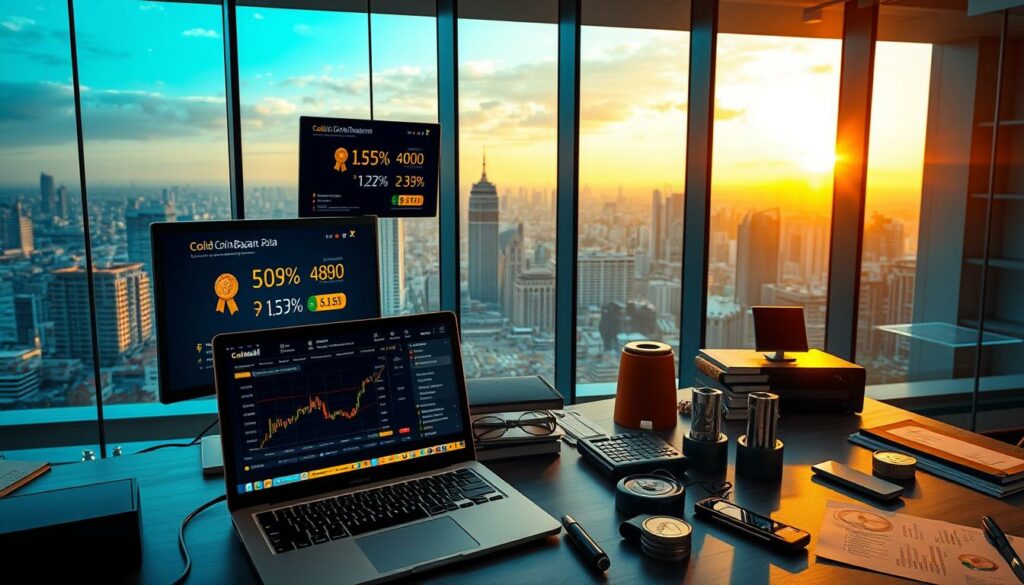

Today’s Precious Metal Pricing in Indian Markets
The current gold prices in India are up due to high demand. This demand isn’t just in India but worldwide. For example, gold prices in Iran have jumped 30% above what they should be.
In India, investors watch the gold rates closely. They look for chances to make money from market changes.
Silver prices are also important, but they’re influenced differently. They often go up or down with gold prices. The gold to silver price ratio can tell you which is a better buy.
Factors Influencing Current Rates in India
Many things affect the daily gold rates in India. These include:
- Global economic trends and world politics
- Local demand and how much gold is available
- Changes in the rupee’s value against the US dollar
- Government rules and taxes on gold imports
Knowing these factors helps you make better choices for your gold and silver investments. As the market changes, keeping up with gold and silver prices is vital for your strategy.
Understanding How Middle East Conflicts Affect Market Sentiment
The ongoing conflicts in the Middle East deeply impact market sentiment. They influence investor decisions and gold prices. As tensions rise, investors look for safe assets, boosting demand for gold and silver.
The Psychology of Investor Reactions to Geopolitical Events
Investor reactions to geopolitical events are driven by uncertainty and market volatility. When conflicts grow, investors become more cautious. They move their investments to safer options. This is especially true for gold, whose prices often rise during tense times.
Historical Volatility Patterns in Precious Metals
Precious metal prices can be very volatile during conflicts. For example, the Iranian rial has lost about 30% of its value against the US dollar in a year. This has led to more demand for gold coins. Knowing these patterns helps investors make better choices about gold and silver.
| Event | Impact on Gold Price | Impact on Silver Price |
|---|---|---|
| Escalation of Middle East Conflict | Increase by 5-7% | Increase by 3-5% |
| Ceasefire or De-escalation | Decrease by 2-4% | Decrease by 1-3% |
By watching real-time gold prices and understanding historical trends, investors can better handle the gold and silver markets.
The Suez Crisis (1956): First Modern Middle East Conflict
The 1956 Suez Crisis was a major event in the Middle East. It had big effects on world relations and prices of things like gold and silver. You might be curious about how this event changed the global economy, especially for gold and silver.
Political Background and Global Implications
The Suez Crisis started when Egypt took control of the Suez Canal. France, the UK, and Israel then launched a military attack. This event changed the world’s power balance and made the US and the Soviet Union more powerful.
Impact on Gold & Silver Rates Worldwide
The Suez Crisis made gold and silver prices go up because of the uncertainty. People wanted safe investments, so historical silver prices and gold rates rose. Here’s a table showing how prices changed during that time.
| Year | Gold Price (USD/oz) | Silver Price (USD/oz) |
|---|---|---|
| 1955 | 35.20 | 0.89 |
| 1956 | 35.30 | 0.91 |
| 1957 | 34.90 | 0.87 |
Learning about the Suez Crisis’s effect on historical silver prices and gold can help investors understand future global tensions.
Six-Day War (1967): Rapid Market Reactions
The 1967 Six-Day War was a short but intense conflict. It had a lasting impact on precious metal prices. This war, fought between Israel and its Arab neighbors, changed global market dynamics.
The Conflict’s Progression and Resolution
The Six-Day War started on June 5, 1967, and ended on June 10, 1967. It was marked by Israel’s quick military victory over Egypt, Jordan, and Syria. Israel took control of the Gaza Strip, the Sinai Peninsula, the West Bank, and the Golan Heights.
Short and Long-term Effects on Precious Metal Prices
In the short term, the Six-Day War caused gold and silver prices to rise. This was due to the uncertainty and instability it brought to global markets. Investors sought safe-haven assets like gold and silver, pushing their prices up.
In the long term, the war added to ongoing Middle East tensions. This risk continued to affect precious metal markets.
As an investor, understanding how such conflicts impact your choices is crucial. This is especially true for assets like gold and silver, which are sensitive to global events.
The 1973 Oil Crisis: OPEC’s Influence on Precious Metals
In 1973, the oil crisis caused by the Arab oil embargo had a big impact on the world economy and precious metals rates. This event was important not just for its quick effect on energy prices. It also had long-term effects on global financial markets.
The Arab Oil Embargo and Its Global Economic Impact
The Arab oil embargo, started in response to the Yom Kippur War, made oil prices quadruple. This big jump had a wide effect on the global economy. It made inflation go up and economic growth slow down.
Because of this, investors started looking for safe places to put their money. They turned to gold and silver more than before.
Gold & Silver Price Surges During the Energy Crisis
During the 1973 oil crisis, gold and silver prices went up a lot. As the embargo got tighter and oil prices climbed, more investors turned to these precious metals. They saw them as a way to protect against inflation and economic uncertainty.
Gold prices, in particular, jumped up a lot. This showed how valuable it was as a safe place to put money during times of trouble and uncertainty.
Looking at how precious metals rates were affected by these events can help investors today. It gives them important insights.
Iranian Revolution (1979): Political Upheaval and Market Volatility
In 1979, the Iranian Revolution caused big changes in politics, affecting markets all over the world. This time was full of uncertainty. Investors looked for safe places to put their money.
The Fall of the Shah and Rise of the Islamic Republic
The Iranian Revolution led to the Shah, Mohammad Reza Pahlavi, being overthrown. An Islamic Republic was then set up. This big change in government made the world’s economy shaky. It affected live silver prices and current gold prices.
As tensions rose, more people wanted precious metals. This increased demand pushed prices up.
Precious Metal Performance During Revolutionary Periods
During the Iranian Revolution, gold and silver prices saw big changes. The uncertainty and instability made people invest more in these metals. This caused their prices to go up.
Investors wanted something stable for their portfolios. Precious metals offered that.
Knowing how world events affect precious metal prices is key. By looking at past trends, you can make smarter investment choices. This helps you deal with the market’s complexities.
Gulf War (1990-1991): Modern Warfare and Market Reactions
In 1990, Iraq invaded Kuwait, causing a global reaction. This event had a big impact on gold and silver prices. It was a major event in modern history, affecting the world economy and precious metal markets.
Operation Desert Storm and Global Economic Implications
Operation Desert Storm started in January 1991. It was a U.S.-led military action against Iraq’s invasion of Kuwait. The war had big effects on the global economy, including:
- Disruption of oil supplies, leading to a surge in oil prices
- Increased military spending by nations involved in the conflict
- Global market volatility, as investors sought safe-haven assets
As the war grew, investors looked to gold and silver for safety. This pushed their prices up. The Gulf War’s impact on the world economy was huge, affecting trade and stability everywhere.
The Spike and Stabilization of Precious Metal Prices
During the Gulf War, gold and silver prices saw a big jump. Gold prices went from about $384 per ounce in July 1990 to a peak of around $403 per ounce in August 1990. Silver prices also soared, as investors sought safe assets.
As the war went on and Operation Desert Storm was launched, prices of precious metals leveled out. The quick end of the conflict and the drop in tensions led to a fall in gold and silver prices. Investors started looking at other assets again, and demand for precious metals went down.
Understanding the Gulf War’s effect on precious metal prices is key. It shows how global events can shape market trends. For investors, knowing these historical patterns can guide your choices, especially when looking at gold price forecast and market volatility.
Post-9/11 Middle East Conflicts (2001-2003)
The War on Terror led to the invasions of Afghanistan and Iraq. These events had a big impact on the global economy. This included changes in gold and silver prices.
Afghanistan and Iraq Invasions
The invasions of Afghanistan in 2001 and Iraq in 2003 were major steps in the War on Terror. They caused a lot of geopolitical uncertainty. This uncertainty made investors look for safe-haven assets like gold and silver.
“In times of war and geopolitical unrest, gold and silver have historically performed well,” said financial analysts. The invasions led to a big increase in gold prices. The real-time gold prices quickly reacted to these events.
Gold & Silver Performance During the War on Terror
In the early 2000s, gold and silver prices moved a lot. Gold prices went up a lot as investors looked for safe places to put their money. The historical silver prices also showed how the market reacted to the tensions.
- Gold prices surged due to increased demand for safe-haven assets.
- Silver prices followed a similar trend, influenced by the industrial demand and investor behavior.
The way gold and silver performed during the post-9/11 conflicts shows their role as hedging instruments. Knowing these historical trends can help you make better choices for your gold and silver investments.
Arab Spring (2011): Revolutionary Wave and Market Uncertainty
In 2011, the Arab Spring caused big changes in politics, affecting how investors acted. Protests and demonstrations in the Middle East made global markets nervous. This was especially true for gold and silver prices.
Multiple Regime Changes and Their Economic Consequences
The Arab Spring led to the fall of old regimes in Tunisia, Egypt, and Libya. This created a power gap and economic trouble. Investors looked to safe-haven assets like gold and silver to protect their money.
So, the demand for precious metals went up. This change affected their prices. The gold and silver rates saw big swings as investors tried to make the most of the uncertainty.
Gold & Silver Rates During Political Transformation
During the Arab Spring, precious metals rates were affected by the political and economic changes. Investors saw gold and silver as a safe place to put their money. This pushed their prices up.
The effect on gold & silver rates was clear, with both metals seeing price increases. This time showed how important it is to know how politics can change precious metal pricing.
Syrian Civil War and Regional Instability (2011-Present)
The Syrian Civil War started in 2011 and has caused a lot of trouble. It has not only affected the Middle East but also the world’s markets. This includes the prices of precious metals like silver.
International Involvement and Economic Ripple Effects
The Syrian Civil War has caught the world’s attention. Many countries have gotten involved, which has made things uncertain. This has made people think twice about investing, leading to higher demand for gold and silver. You can check the live silver prices to see how these events affect the market.
The war’s impact has been felt everywhere. Prices for things like precious metals have gone up and down. When things get uncertain, people often buy gold and silver, which makes their prices go up.
Long-term Precious Metal Trends During Ongoing Conflicts
Looking at precious metals trends during the Syrian Civil War shows some patterns. For example, when conflicts get worse, live silver prices often go up. Here are some important points:
- Silver prices tend to increase during major conflict escalations.
- Investor behavior shifts towards safe-haven assets during uncertainty.
- Global economic implications of the war affect commodity prices.
By understanding these trends and watching live silver prices, investors can make better choices about precious metals.
Tracking Gold & Silver Rates During Recent Conflicts (2020-Present)
Geopolitical events, especially in the Middle East, have always affected gold and silver prices. This makes it important to keep a close eye on them. When tensions go up, people look for safe investments, leading to price changes.
Digital Tools for Monitoring Precious Metal Prices
In today’s fast world, knowing the current gold prices and daily gold rates is key. Digital tools help investors track these prices in real-time.
Online platforms and financial sites give the latest on gold and silver prices. They offer historical data, charts, and expert views to guide investors.
Real-time Market Responses to Middle East Developments
The recent Israel-Iran conflict has caused big market swings. Real-time gold prices quickly react to these events. Investors use digital tools to stay updated.
Mobile Apps for Indian Investors
For Indian investors, mobile apps are vital for tracking gold and silver rates anywhere. Apps like Gold Price India and Commodity Prices offer updates, alerts, and portfolio tracking.
Setting Price Alerts and Notifications
Investors can set price alerts and notifications to improve their strategies. This feature keeps them informed when prices hit their targets. It helps them make quick decisions.
A financial expert noted, “Tracking gold and silver prices in real-time is a big advantage for investors. It lets them quickly adapt to market shifts and make smart choices.”
“The key to successful investing is not just about having the right information, but having it at the right time.”
By using these digital tools, Indian investors can better understand the precious metals market. They can make more confident and precise investment decisions.
Comparative Analysis: Gold vs. Silver Performance During Conflicts
When tensions rise, investors often look to precious metals. But how do gold and silver perform during conflicts? Knowing their past performance helps investors make better choices.
Historical Price Ratio Fluctuations
The price ratio between gold and silver has changed a lot during conflicts. For example, in the 1973 oil crisis, gold prices soared. Silver prices also went up, but with more ups and downs. Looking at these changes can help us understand market trends.
| Conflict | Gold Price Change | Silver Price Change |
|---|---|---|
| 1973 Oil Crisis | +20% | +30% |
| Gulf War (1990-1991) | +15% | +10% |
| Post-9/11 (2001-2003) | +25% | +20% |
Which Metal Provides Better Security
Gold is often seen as a safe asset, but silver has its moments too. For instance, during the Arab Spring, silver prices jumped up. This was because of its use in industry and limited supply.
When deciding, think about your gold price forecast and historical silver prices. By studying past trends and the factors that affect these metals, you can make smarter choices in the precious metals market.
Investment Strategies Based on Historical Conflict-Price Patterns
Looking at how Middle East conflicts have affected gold and silver prices can improve your investment strategy. By studying past events, you can make smarter choices about where to put your money.
Timing Your Precious Metal Investments
When it comes to gold and silver, timing is everything, especially during tense times. Prices tend to rise during conflicts, but how much and for how long can differ. For example, the 1973 oil crisis saw gold prices soar due to the Arab oil embargo. This history can guide you on when to invest.
Diversification Approaches for Indian Investors
Diversifying your investments is crucial to manage risk. For investors in India, mixing physical gold, digital gold, and silver can be a good strategy. Knowing the pros and cons of each can help you build a well-rounded portfolio.
Physical Gold vs. Digital Gold Options
Physical gold gives you a solid asset to hold onto when things get uncertain. Digital gold, however, makes buying and storing easier. Combining both can be a smart move.
Silver Investment Opportunities in India
Silver is also a great addition to your investment mix. In India, you can invest in physical silver coins and bars or digital silver products. Keeping an eye on live silver prices online helps you make quick investment choices.
| Investment Type | Benefits | Risks |
|---|---|---|
| Physical Gold | Tangible asset, no counterparty risk | Storage and security concerns |
| Digital Gold | Easy to transact and store | Counterparty risk, market volatility |
| Silver | Industrial demand, affordable | Price volatility, market speculation |
By looking at past conflict-price patterns and diversifying, you can handle the precious metals market better. Keep an eye on precious metals rates and adjust your plans as needed.
Conclusion: Preparing Your Portfolio for Future Middle East Developments
Middle East conflicts have always affected gold and silver prices. To get ready for the future, it’s key to know these patterns. By studying past conflicts’ effects on metal prices, you can make smart investment choices.
Watching the gold price forecast helps you invest at the right time. When tensions rise, people often buy gold and silver as safe options. Keeping up with current events helps you adjust your strategy.
Diversifying your portfolio and staying current with trends is crucial. This way, you can handle the challenges of investing in precious metals during uncertain times. With this knowledge, you can make smart decisions, keeping your investments strong against future Middle East changes.






